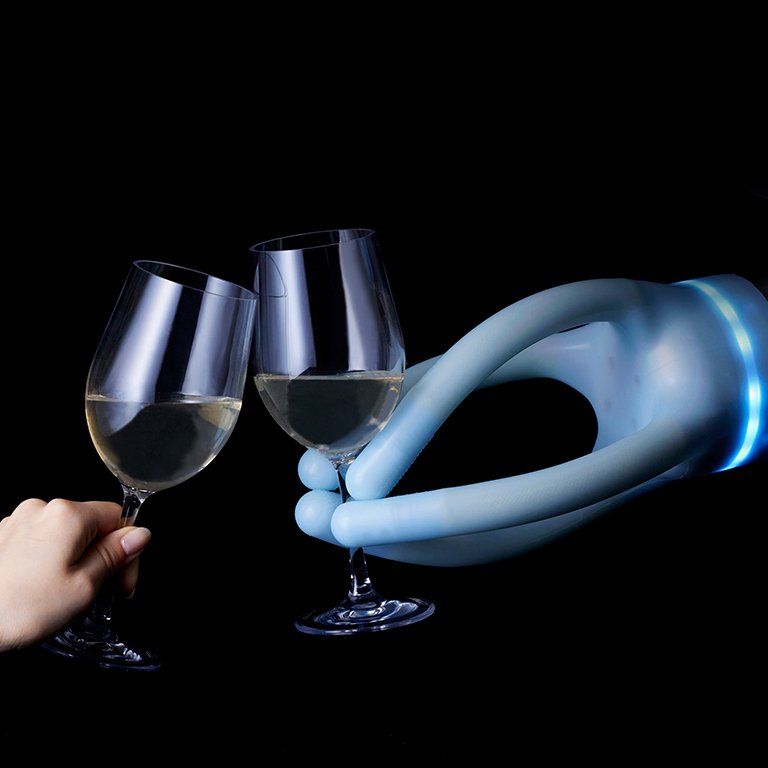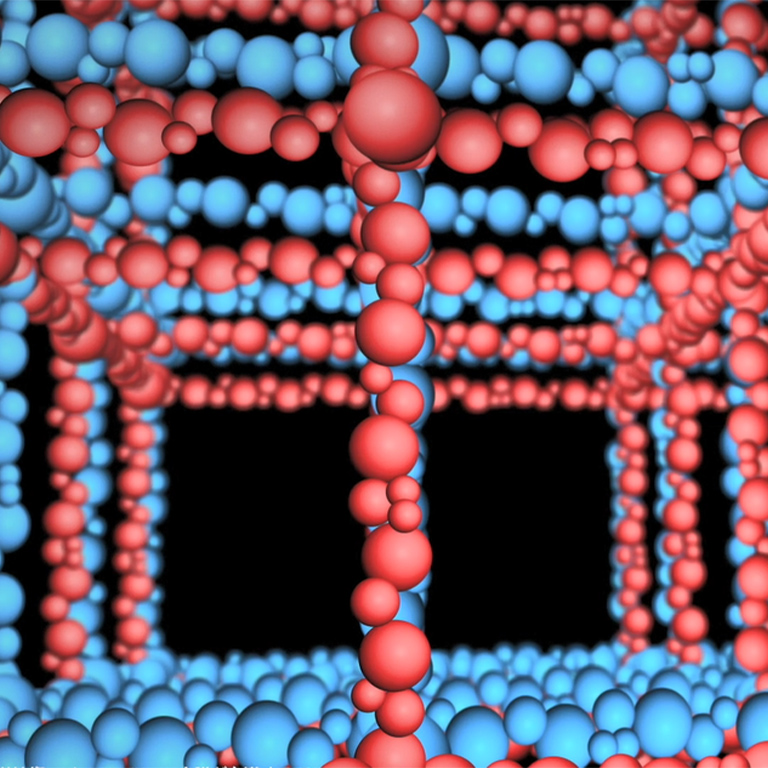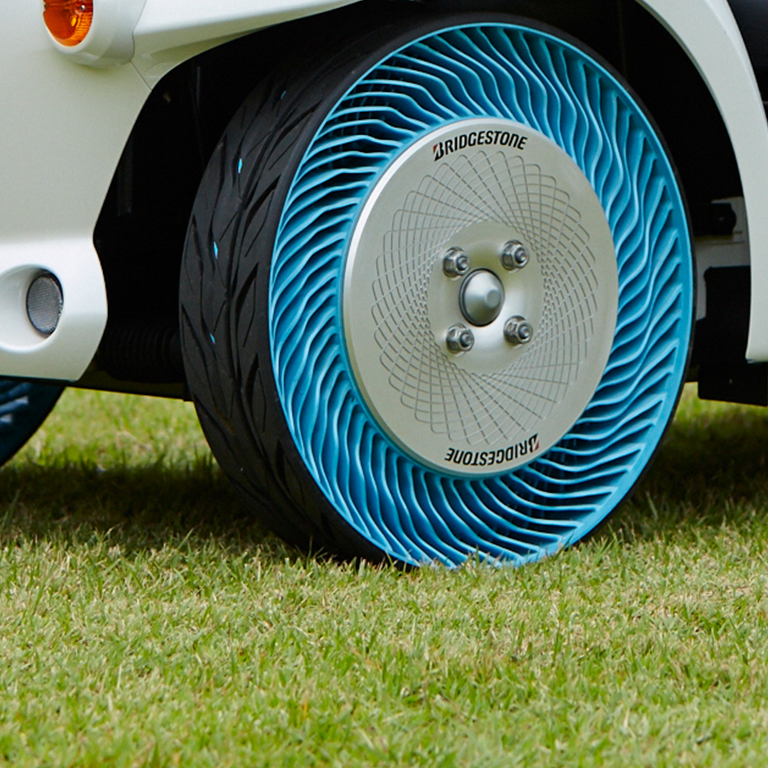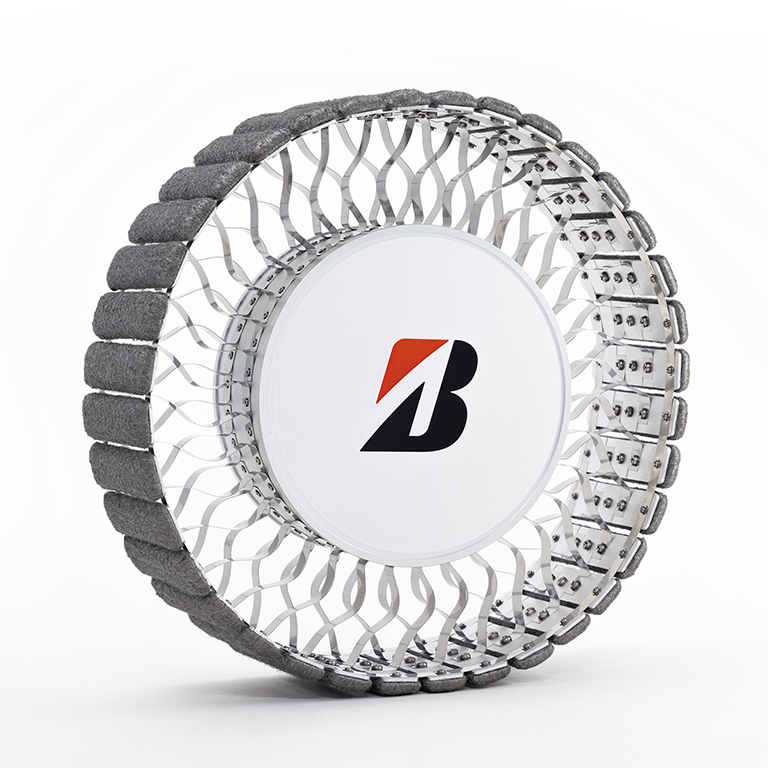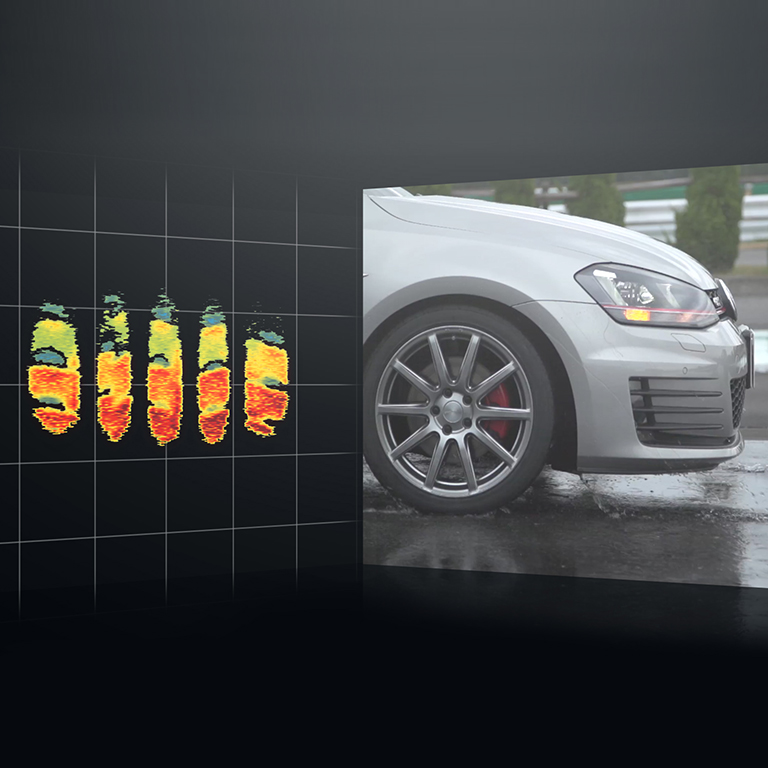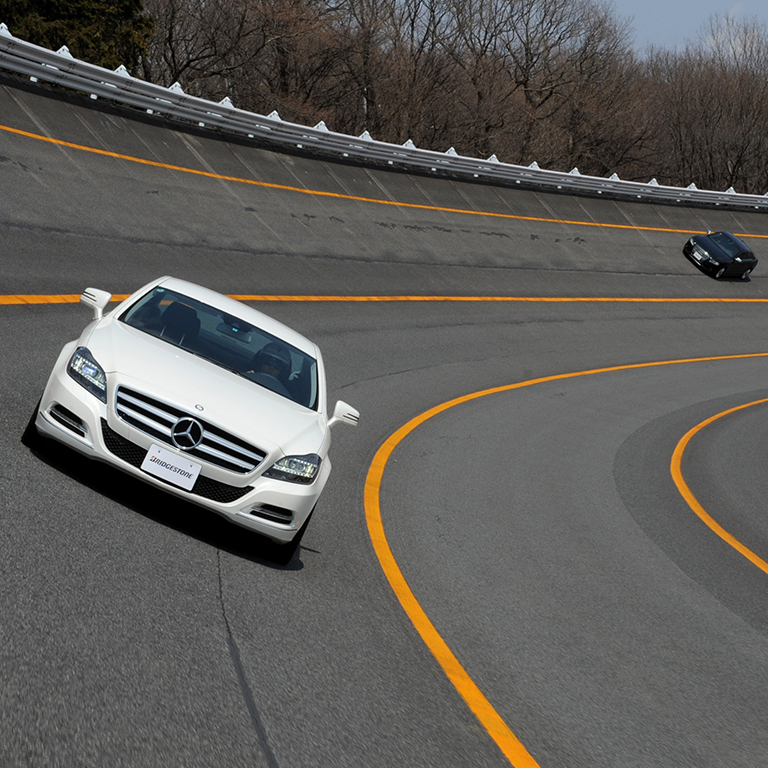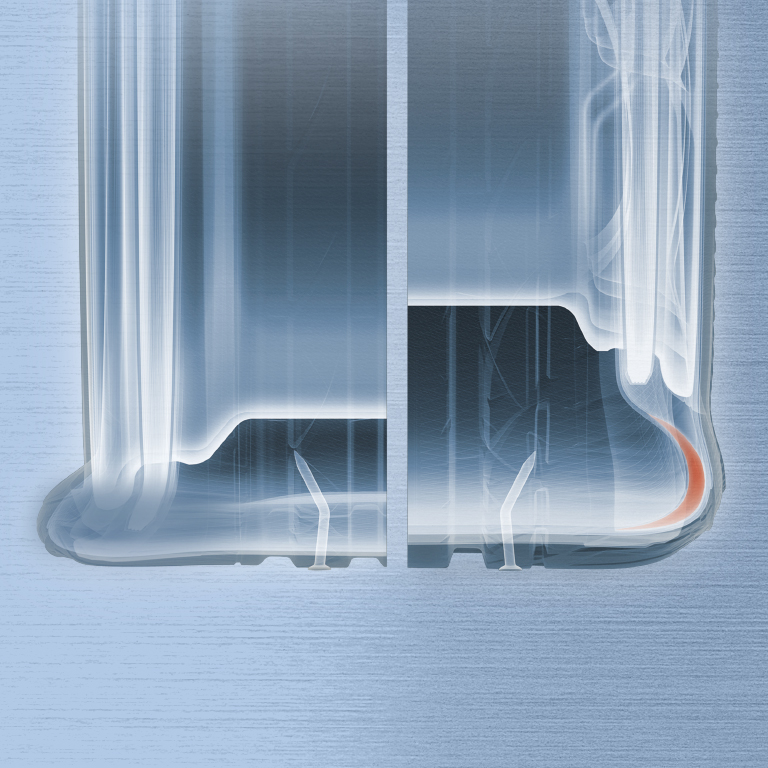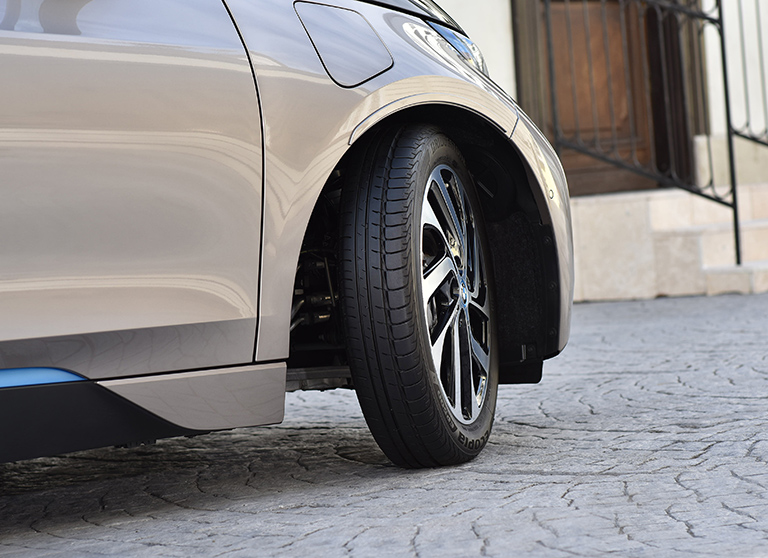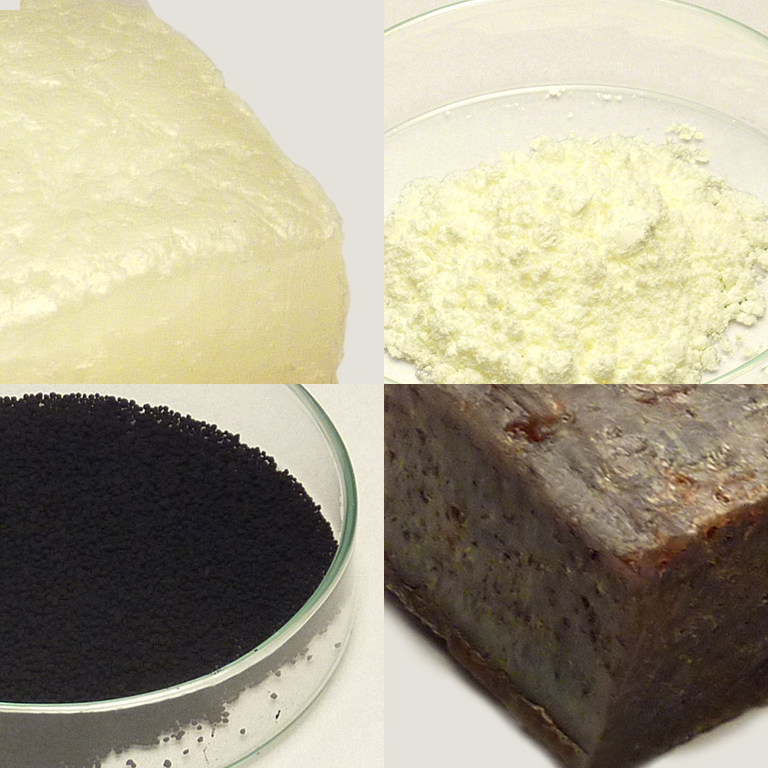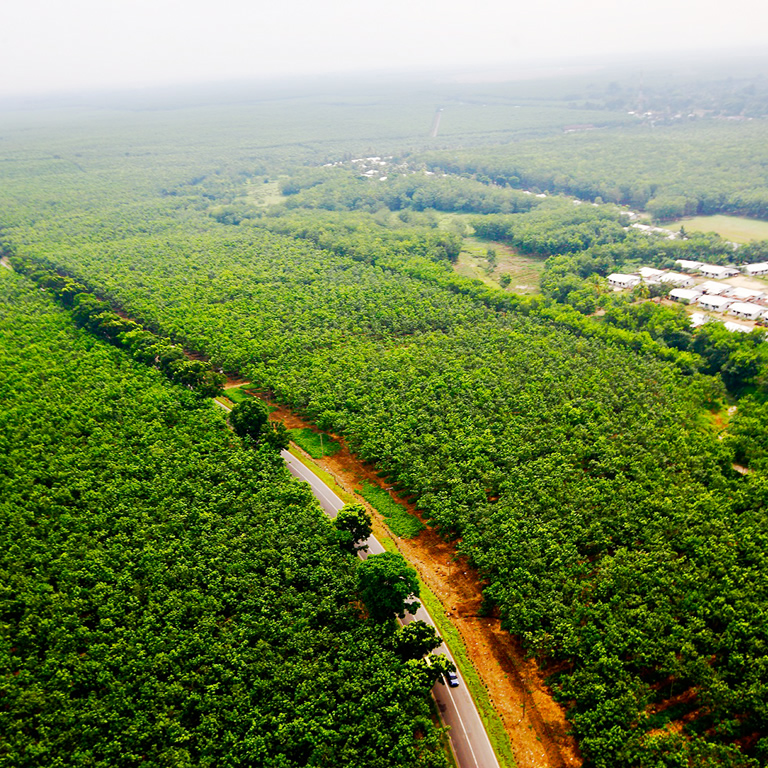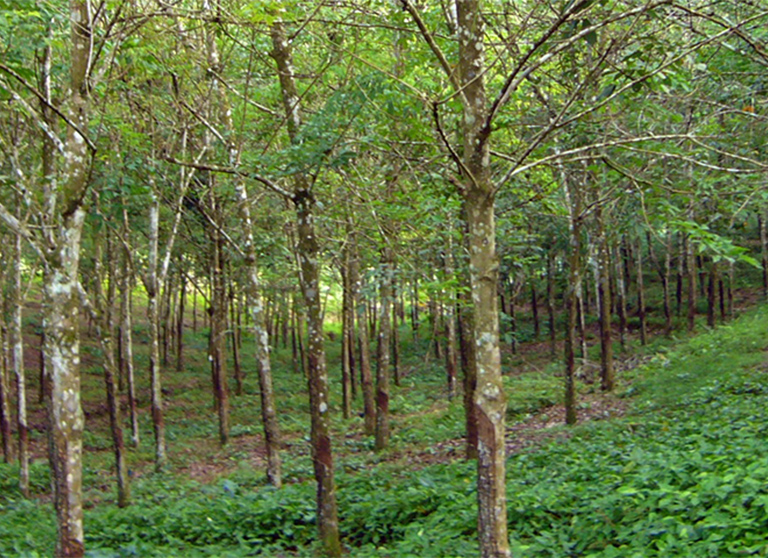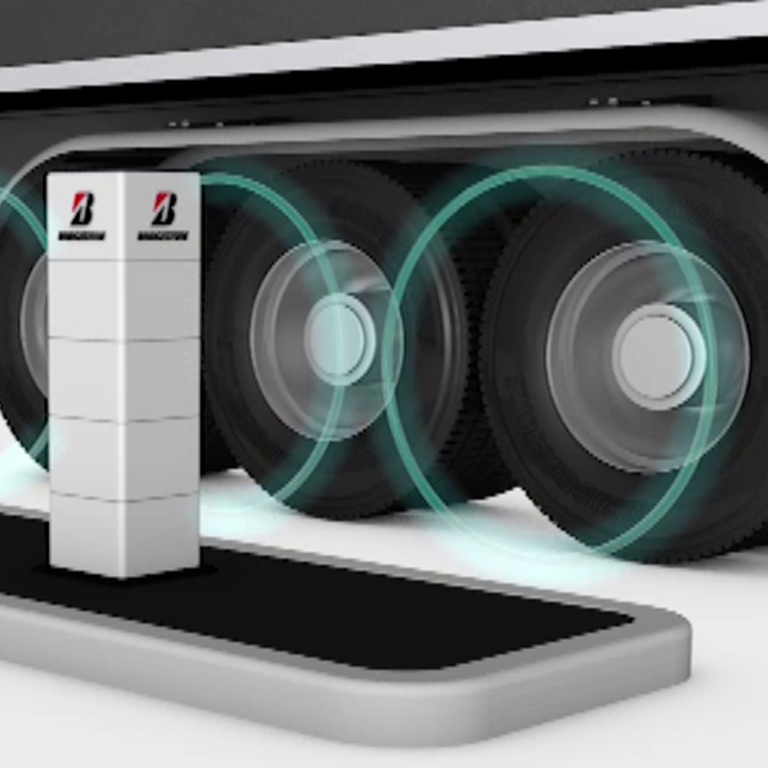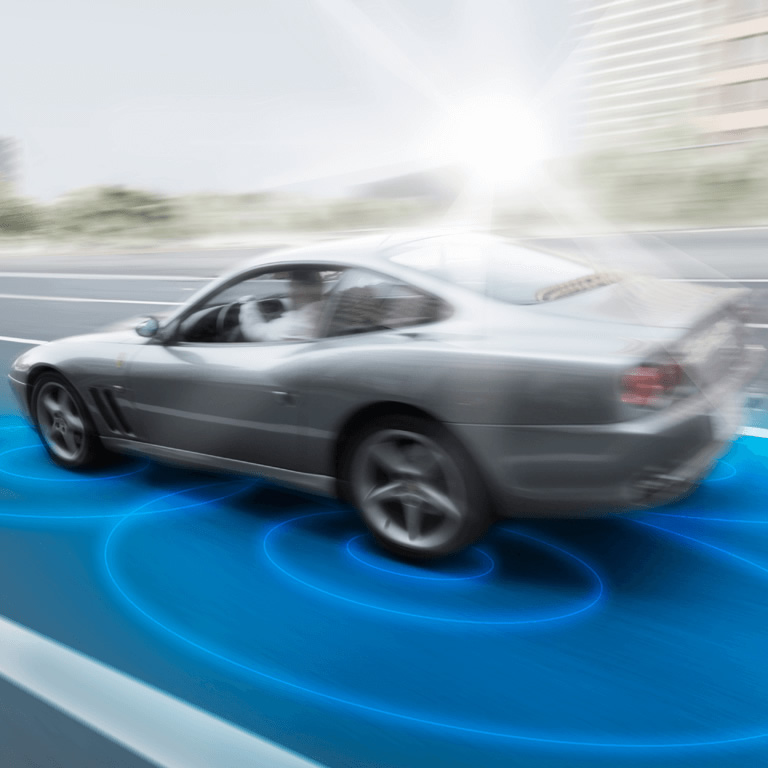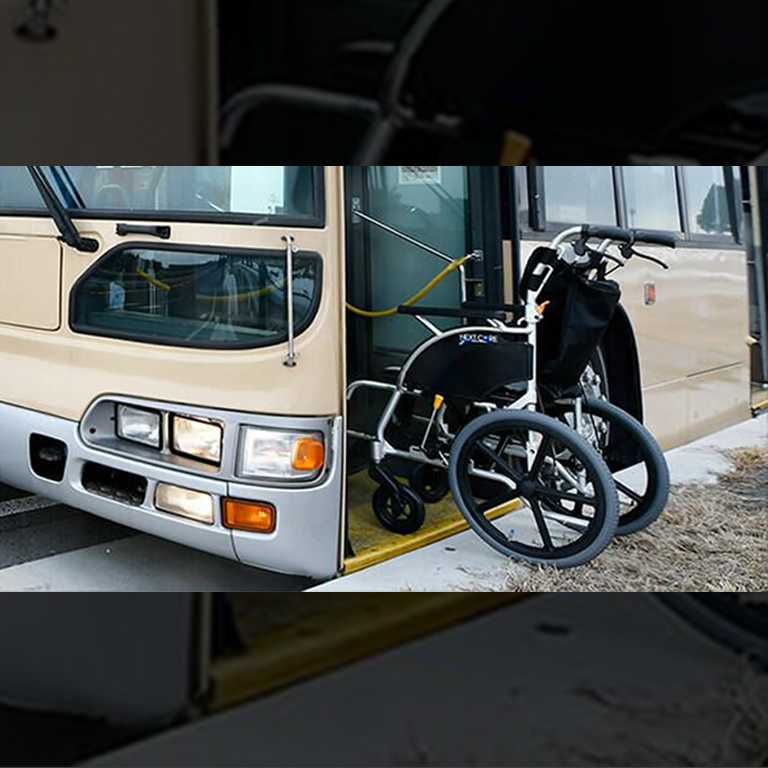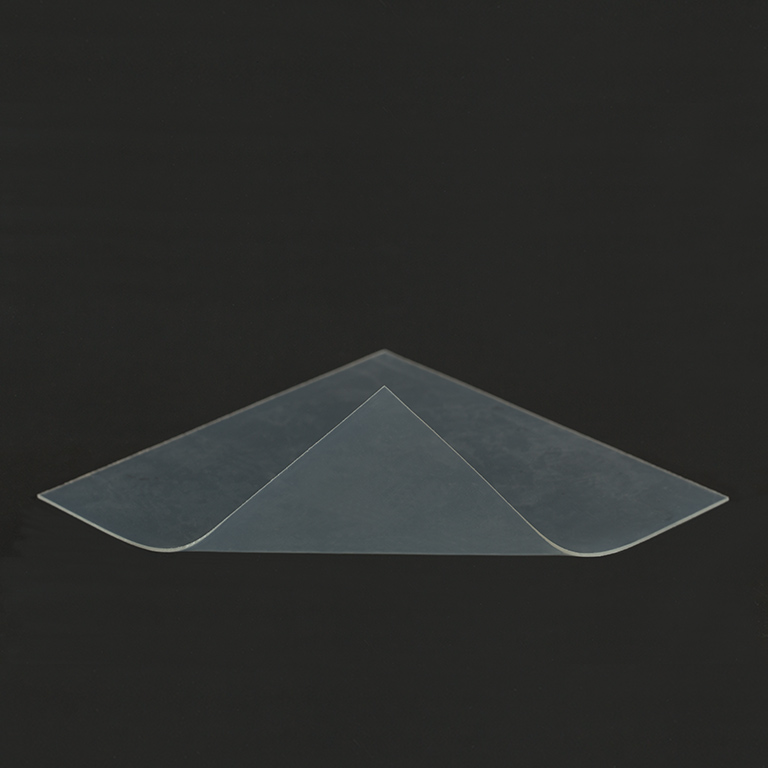
Bridgestone’s Lunar Rover Tire
Supporting the movement of lunar mobility with safety and peace of mind, enabling humankind to pursue the moon
Bridgestone has been working on the lunar rover tire development based on the fundamental principle of “tires carry life.” Bridgestone, which understands the roads around the world and supported the evolution of all kinds of mobility on Earth, will support the evolution of the space mobility from the ground up through the challenge for space exploration.

Bridgestone’s technology innovation has supported the evolution of mobility and has been refined in extreme conditions such as motorsport activities. Through this project, the company aims to become an essential part of the future of mobility by taking on the challenge of exploring extreme conditions on the moon's surface, which will be a new frontier for humankind.

Characteristics demanded for lunar rover tire
Bridgestone is currently developing lunar rover tires to support safety and peace of mind of lunar exploration in the extreme environment of the moon's surface. Here are the performance and features of the tires:
-
First Generation

-
Second Generation

1. Tires supporting loads without air
The lunar surface is a high vacuum environment with very little or no atmosphere, making it challenging for conventional rubber tires which rely on air pressure to support the load. Therefore, non-pneumatic tires are necessary for lunar exploration.
2. Tires made of metal to withstand intense temperature fluctuations and radiation exposure
Due to the lack of a protective atmosphere on the lunar surface, the tire is exposed to high-energy radiation known as cosmic rays, and the temperature is estimated to range from 120°C to -170°C. In this environment, polymer materials such as rubber and resin, which undergo significant changes in physical property, degrading quickly in the lunar environment. With traditional rubber tires unsuitable for lunar use, Bridgestone is developing metal tires to traverse the moon’s surface.
3. Tires that can drive without sinking in sand
The lunar surface is covered with fine sand called “regolith,” and there is a possibility that the tires may sink and get buried while driving. Bridgestone aims to develop tires that have a large contact area and can drive without sinking or becoming stuck in the regolith.
Bridgestone's Evolving Lunar Rover Tire
<First-generation (coil spring structure)>
Inspired by the footpads of camels that traverse deserts, by placing a soft, metal-based felt material on the tread area that contacts with the moon’s surface, Bridgestone has enhanced the frictional force between the tire and the regolith, resulting in superior traction.

<Second-generation (spoke structure with “Air Free®” tire technology)>
Following extensive R&D and testing efforts with the first-gen lunar tire, the new Bridgestone second-generation tire applies a skeletal structure to meet the harsher demands for durability and traction on the lunar surface. The new structure utilizes technologies that have been accumulated thorough the development of next-generation "Air Free" tire, and introduced thin metal spokes(*1) and divided the tread segment in the rotational direction to withstand the extreme lunar environment, characterized by rocks, sand, vacuum conditions, and intense temperature fluctuations and radiation exposure. This innovative structure achieves high level durability and ability to traverse.
With the advancement of both real and digital technologies, Bridgestone has optimized the shape and thickness of the metal spokes using structural simulations. This allows the spokes to flex while minimizing localized strain on the metal spokes, enhancing tire’s durability and improving the traction and ability to traverse by increasing the contact area and reducing sinking with divided tread segment.
- *1A component that connects the contact patch to a wheel and that supports the weight of a vehicle while absorbing shocks.

Prototyping tires and further validation tests
To evaluate the feasibility of tires designed and prototyped, Bridgestone is conducting validation experiments in environments that closely resemble the lunar surface. For example, driving tests are being conducted at the "Luna Terrace," a lunar surface validation field located in the Tottori Sand Dunes in Tottori, Japan, featuring vast sandy terrain with various undulations. Through these tests, data on tire durability, traction, and other performance aspects are collected and analyzed.

The lunar rover tire project is an initiative to expand the utilization of "Air Free", which is positioned as an exploratory business in Bridgestone's Mid Term Business Plan (2024-2026), from Earth to space and the lunar surface. In the future, the company aims to apply the technology refined in the extreme lunar environment to tires used on Earth, thereby contributing to further value creation.

Additionally, by demonstrating the company’s challenge and pursuit of excellence to its partners through this project, the company is fostering empathy and trust. Bridgestone is also making key connections to expand its network in the space industry and co-creation opportunities with various international partners.





